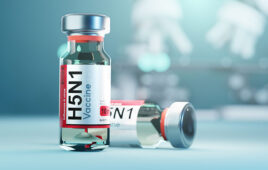A drug already approved for people with cancer shows early potential as a therapy for a common form of dementia, UT Southwestern Medical Center researchers report.
“Suberoylanilide hydroxamic acid (SAHA) holds promise as a first-generation drug for the prevention and treatment of familial frontotemporal dementia (FTD), a progressive, inherited neurodegenerative disease for which there is no treatment,” said Dr. Joachim Herz, director of the Center for Alzheimer’s and Neurodegenerative Diseases and the study’s senior author.
“SAHA is already approved for clinical use in an unrelated condition, which should make it easier to move quickly to human trials,” added Dr. Herz, professor of molecular genetics and neuroscience at UT Southwestern.
FTD – usually diagnosed around age 60 – trails only Alzheimer’s disease among non-elderly dementias. The as-yet untreatable condition is marked by a progressive deterioration in decision-making ability, behavioral control and/or language skills.
In a study available online and in the current issue of the Journal of Biological Chemistry, UT Southwestern researchers from the Alzheimer’s Center, the Harold C. Simmons Comprehensive Cancer Center and the Protein Chemistry Technology Center showed that SAHA increased the cell-signalling protein progranulin (GRN) levels in a dose-dependent way in cultured mouse cells and also demonstrated that it restored near-normal GRN production in cells from human subjects with FTD.
Up to 25 percent of patients with FTD have an inherited form of the disease that is thought to be caused by one of several genetic mutations that reduce production of GRN, Dr. Herz said. Because familial FTD patients inherit one working copy of the GRN gene and one mutated one, the researchers wanted to identify a drug that would make the working copy of the gene work harder.
In an attempt to move as quickly as possible from basic science to clinical trials, the team established a method to quickly screen 1,200 drugs that already had Food and Drug Administration approval. SAHA emerged as the most active of the chemicals they screened, said lead author and graduate student Basar Cenik, who works in the laboratories of both Dr. Herz and co-senior author Dr. Gang Yu, associate professor of neuroscience.
SAHA is in a class of drugs called histone deacetylase inhibitors, and is approved for use in a cancer called cutaneous T-cell lymphoma.
“We found a drug that can overcome the chemical deficiency associated with the condition, and we showed that it worked in cells taken from humans with FTD,” Dr. Yu said.
It is not yet known if the drug will efficiently cross the blood-brain barrier, a biologically protective system that keeps many chemicals from reaching the brain, Dr. Yu said. The next research step, he said, will be to screen larger chemical libraries in an effort to find other promising GRN-stimulating drugs for human trials.
Drs. Herz and Yu are both investigators for the Consortium for Frontotemporal Dementia Research and are working toward human trials with that national network, which is based at the University of California at San Francisco.
Date: June 1, 2011
Source: UT Southwestern Medical Center
Filed Under: Drug Discovery



